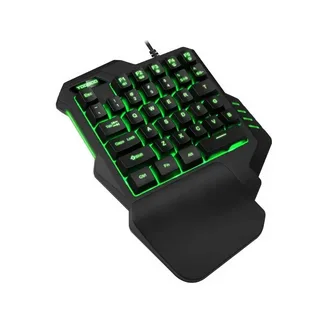In the world of gaming, every millisecond matters. While many focus on graphics cards and processors, the importance of a responsive and reliable keyboard is often overlooked. The performance of a gaming keyboard is largely determined by its switches. This article delves into the science behind gaming keyboard switches explained in detail, uncovering what makes them so crucial for gamers.
What Are Keyboard Switches?
Keyboard switches are the mechanical components under each keycap that register a key press. These switches come in various types, each offering a unique feel, sound, and actuation force. Unlike membrane keyboards, which use a pressure pad system, mechanical switches are known for their durability and responsiveness—two factors that gamers value highly.
Types of Mechanical Switches
Understanding the science behind gaming keyboard switches explained requires a closer look at the different switch types. The most common are:
1. Linear Switches
Linear switches, like Cherry MX Red or Gateron Red, offer a smooth keystroke with no tactile bump or audible click. They’re preferred by competitive gamers due to their fast actuation and low resistance, allowing rapid key presses.
2. Tactile Switches
Tactile switches, such as Cherry MX Brown, provide a noticeable bump at the actuation point. This tactile feedback is helpful for those who want confirmation of a keystroke without needing a loud click, balancing speed and control.
3. Clicky Switches
Clicky switches (e.g., Cherry MX Blue) deliver both a tactile bump and an audible click. While satisfying to type on, they can be too noisy for shared spaces and are generally more popular among typists than esports players.
How Switches Affect Gaming Performance
The performance differences in switch types may seem subtle, but they can impact gaming outcomes significantly. Factors like actuation force (the amount of pressure needed to register a keypress), travel distance, and debounce time all play roles in responsiveness. These mechanical variables are critical to the science behind gaming keyboard switches explained, as they directly influence reaction time and comfort during long sessions.
Materials and Build Quality
The internal design and materials of a switch also affect its longevity and feel. High-quality switches often use gold-plated contacts for better conductivity and resistance to corrosion. Spring tension, stem design, and housing precision also contribute to consistency and performance—elements that are central to the science behind gaming keyboard switches explained.
Customization and Hot-Swappable Options
Modern gaming keyboards often come with hot-swappable features, allowing users to replace switches without soldering. This customization lets gamers fine-tune their keyboard’s performance and feel, optimizing it for specific game genres or personal preferences.
Conclusion
From the type of switch to the materials used, the design of gaming keyboard switches is a fine-tuned science that plays a pivotal role in gameplay performance. Whether you’re a casual player or an esports competitor, understanding the science behind gaming keyboard switches explained can help you make informed choices for your setup. After all, the right switch might be the edge you need to outplay the competition.

